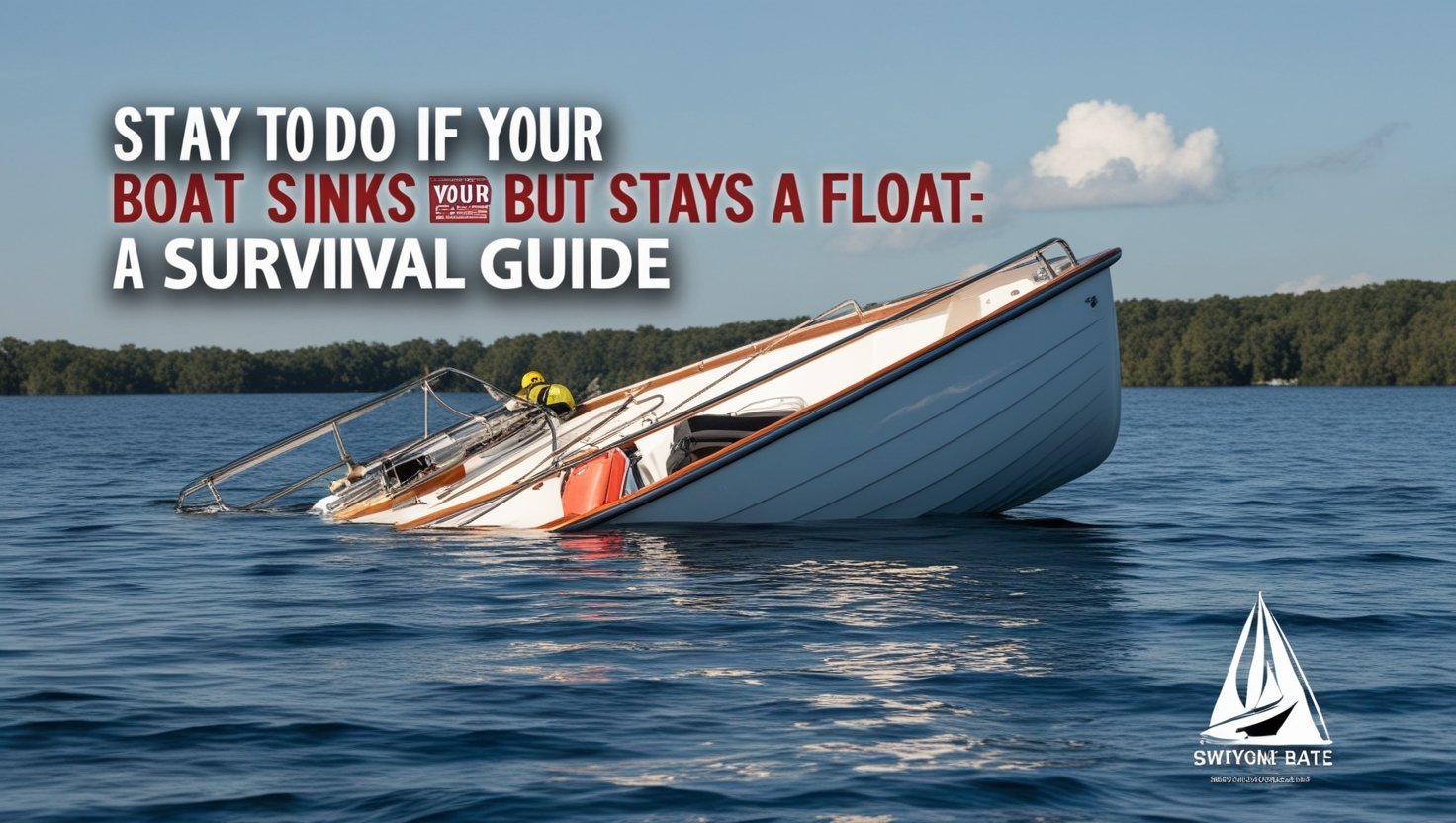
what to do if your boat sinks but stays afloat: a survival guide
Boating can be a thrilling and relaxing experience, but it also comes with risks. One of the most frustrating scenarios a boater can face is when the boat is floating but capsizes. Knowing how to react in such situations can mean the difference between life and death. This article will provide the necessary steps to take if your boat capsizes but remains afloat, ensuring your safety and increasing your chances of survival.
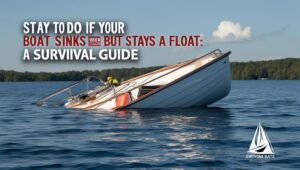
Stay calm and assess the situation.
The first and most important step in any emergency is to stay calm. Panic can cloud your judgment and lead to poor decisions. Take a deep breath and quickly assess the situation. Determine if any were injured and if all will be accounted for. Staying calm will help you think clearly and work effectively.
Check for injuries.
Before anything else, check yourself and others for injuries. Give priority to injured people and provide basic first aid if possible. Ensuring everyone’s safety and well-being is a top priority.
Assess the condition of the boat.
Inspect the boat for leaks or major damage. If the boat is still floating, it will likely continue to do so for a while, giving you a chance to stabilize the situation and prepare for rescue.
Stay with the boat
One of the most important rules in boating accidents is to stay with the boat. A sinking boat is much easier for rescuers to find than people swimming in the water. Staying with the boat increases your visibility and chances of a quick rescue.
Board the boat.
If possible, get on the overturned hull of the boat. This will help you stay dry, avoid hypothermia, and be visible to rescuers. If you cannot get into a boat, secure yourself in it to avoid being swept away.
Secure the boat
If the boat drifts, use any available tools such as anchors, ropes, or even paddles to secure the boat in place. This will prevent the boat from drifting further away from where rescuers can find you.
Signal for help
Once you make sure everyone is safe and secure, the next step is to signal for help. The sooner you can draw attention, the sooner you can be saved.
Use signaling devices.
If your boat is equipped with flares, whistles, or horns, use them to signal distress. These tools are designed to attract attention and can be lifesavers in emergencies.
Visual Signals
If you don’t have signaling devices, use bright clothing, life jackets, or something similar to attract the attention of passing boats or planes. Waving your arms can also be an effective way to signal distress.
. Prevent hypothermia.
Exposure to water, especially cold water, can lead to hypothermia, which is one of the most dangerous risks in an enveloping situation. Hypothermia can set in quickly, especially in cold water, and it’s important to take steps to prevent it.
Minimize exposure to water.
If you are in the water, try to minimize the amount of your body that is submerged. If possible, pull yourself onto the boat to stay out of the water. If this is not possible, try to float on your back and keep your head above water.
Use the huddle position.
If you are with others, huddle together to conserve body heat. If you are alone, assume the Help (Heat Escape Listening Posture) position by bringing your knees to your chest and wrapping your arms around them to conserve heat.
Manage exposure to elements.
Exposure to sun, wind, and rain can be tiring and dangerous. Taking steps to manage your exposure to the elements is critical to survival.
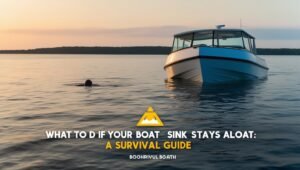
Protect yourself from the sun.
Protect yourself from sunburn and heatstroke if you’re stuck during the day. Use clothing, life jackets, or any available material to protect your skin from the sun. Hydration is key, so drink water if you have it available.
Prepare for rain and storms.
If a storm approaches, keep yourself and others in the boat safe to avoid being swept away by strong winds or waves. If possible, use tarps, sails, or other materials to make temporary shelters.
Use available resources wisely.
In a survival situation, every resource counts. Use what you have efficiently and wisely to increase your chances of survival.
A ration of food and water
If you have food and water on board, ration it carefully. Eat only what you need to stay hydrated and nourished. Avoid eating unless you have water available, as digesting food without water can lead to dehydration.
Improve tools and shelter
Look for items on the boat that can be used to improve your situation. Tarps, paddles, ropes, and even seat cushions can be reused to make shelters, flotation devices, or signaling tools.
Stay positive and keep your spirits up
Survival situations can be mentally taxing. Keeping a positive attitude and encouraging others to remain hopeful until rescue arrives is crucial to enduring the situation.
Mental flexibility
Staying positive can have a significant impact on your ability to survive. Focus on what you can control, like staying warm, calling for help, and conserving energy. Keep your mind occupied with plans and goals to maintain a sense of purpose.
Support each other.
If you are with others, provide emotional support. Encourage each other, share tasks, and keep spirits high. Working together as a team will improve your chances of survival.
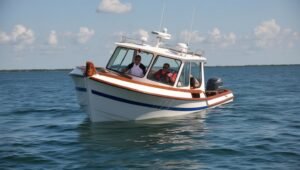
Understand rescue signals.
Know how to recognize and respond to rescue signals. Being prepared to point back can speed up your rescue.
Recognizing Aircraft Signals
The rescue aircraft may signal you with hand signals or signals. Familiarize yourself with common rescue signals, such as thumbs up or thumbs down to indicate status, and be prepared to respond appropriately.
Responding to Rescue Teams
If the rescue team arrives, stay calm and follow their instructions. If you have signaling devices, use them to send the team to your location.
Handling multiple survivors
If you are with a group, managing the needs and safety of multiple people can be difficult but vital to survival.
Assignment of Roles
Assign roles to each survivor based on their strengths. For example, one person might focus on signaling for help, another on delivering rations, and another on keeping everyone moving.
Care of Vulnerable Persons
Pay special attention to children, the elderly, or the injured. Make sure they are safe, warm, and as comfortable as possible. Give them extra protection from the elements if necessary.
Long-Term Survival Techniques.
In the unlikely event that rescue takes longer than expected, it will be important to know some long-term survival techniques.
Collection of water
Collect rainwater using tarps, sails, or other materials. Fresh water is very important, and rainwater is the safest source available in such conditions.
Fisheries and Food Sources
If the rescue is delayed and supplies run out, you may need to forage for fish or food. Use fishing lines or improvised hooks to catch fish, but only if the situation becomes dire.
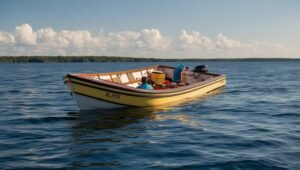
The result
Avoiding a boat capsize is difficult, but with the right knowledge and preparation, it is possible. Stay calm, stay with the boat, signal for help, manage your exposure to the elements, and keep your spirits up. By following these steps, you increase your chances of survival and rescue. Remember, preparation is key — knowing what to do in advance can make all the difference.
